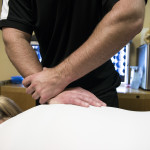Life can grant miracles, but rarely do the hockey gods send them. If you could name one player that possesses incredible skill with unprecedented conditioning and an uncanny mindset, you let me know, because I’d love to be that person’s coach. The reality is even the best players put time into skill development, off-ice conditioning and mental preparation.
It is far too common, in my profession, to see athletes overlooking an important piece of the puzzle: restoration. Please don’t get confused. I don’t mean recovery, which is a very important cog in the hockey wheel. What I’m referring to is restorative methods, i.e. yoga, massage, meditation, and chiropractic.
These pieces are important for multiple reasons, one being that they work in combination to restore the body and mind. However, you may argue that rest and recovery accomplish the same results. I disagree. You may also claim that these practices are not masculine. Try one and get back to us. Whatever you currently think, toss it out the proverbial window and start practicing at least once a week on your “off-day” or “light” day. If you are lacking one of those, as well, then we have much more to discuss.
I digress. Yes, recovery does heal microtears in muscle tissue, restrictions on fascia, and soreness, related to the build up of excessive fatigue causing toxins. However, massage, especially techniques like STR (soft tissue release), ART (a spin off from STR) and myofascial release enable effective, quicker healing due to an increase in blood flow to an affected area, as well as manually facilitating the release of adhesion, tight spots, in muscle and fascia.
Yoga is specifically core intensive. If you are a hockey player with a weak core, you likely have experienced one or several acute or chronic injuries. Yoga exacerbates balance. It will improve proprioception, as well as the recruitment of Type 2 muscle fibers that are responsible for explosive power and absolute strength. Your practice enables you to hone your ability to focus, a key aspect in being an effective, consistently health hockey player. Meditation fits similarly into your yogic practice. The main difference is the lack of muscular energy expenditure and decreased heart rate.
Finally, for those that fear chiropractic work, I understand your concerns. Bones and joints are meant to move only in certain planes of motion. Guys, like Dr. Chad Moreau, have significant education with years of experience. Plain and simple, they know how joints are suppose to move efficiently. In order to correct movement patterns, one must have properly functioning muscles. Tight muscles can limit efficient joint movement. Inversely, damage to a bone or athrosis, can and will affect muscles along that kinetic chain. If we take it one step further, when you injury a muscle or group of muscles, you effectively restrict or disturb every single muscle, bone, joint, tendon, ligament, neural and endocrine pathway that works along with that muscle to produce energy. It’s a reciprocal effect.
One smart way to turn the tides is to take this article and apply it to your arsenal of training. Not every tool will be effective for every athlete. Hence, this is why you should seek out professionals that understand what will help you. Working through pain is not an effective route to optimal performance. It’s always smart to consult your doctor prior to starting any treatment plan, but most docs will be very encouraging when it comes to choosing these restorative methods.
















